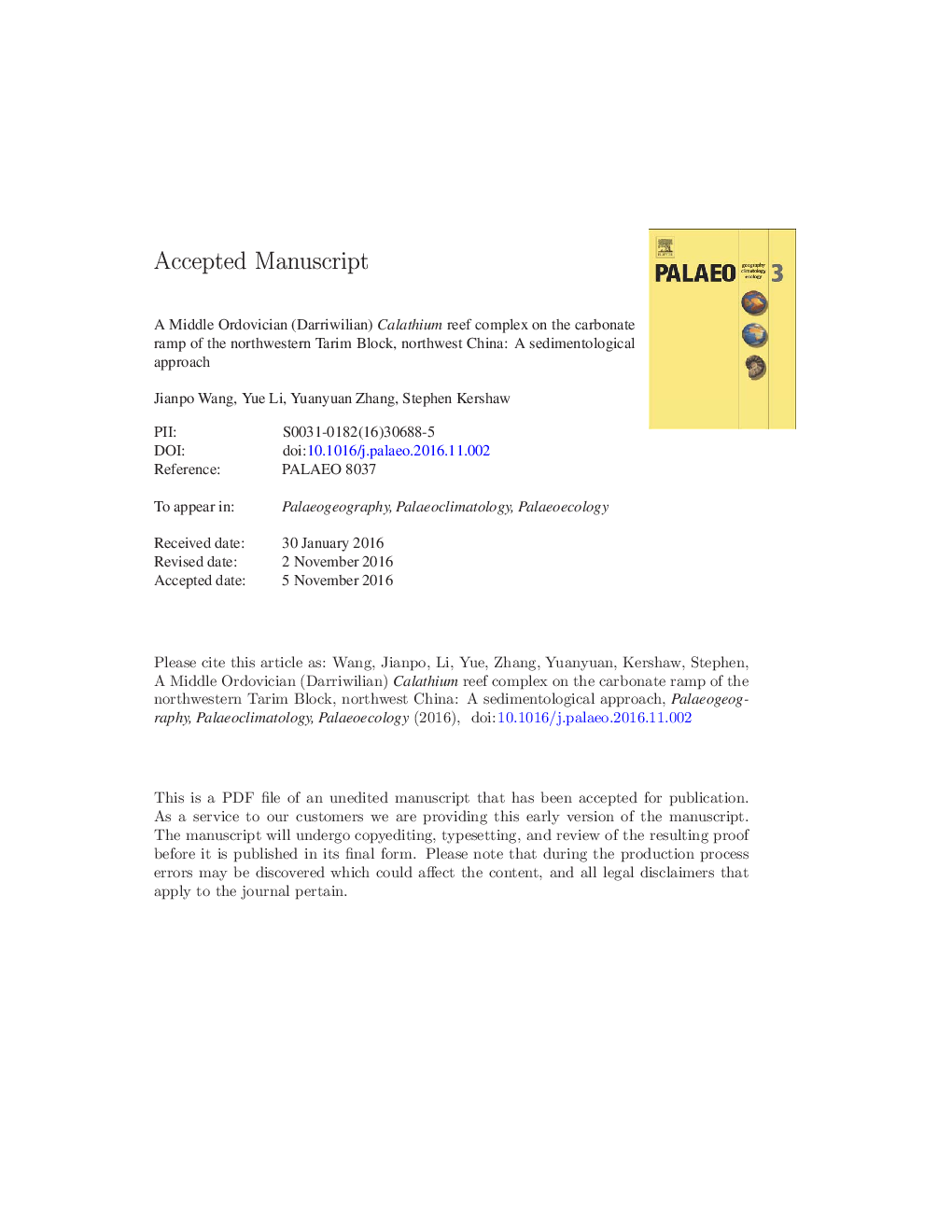| Article ID | Journal | Published Year | Pages | File Type |
|---|---|---|---|---|
| 5755952 | Palaeogeography, Palaeoclimatology, Palaeoecology | 2017 | 32 Pages |
Abstract
Middle Ordovician carbonates are exposed for 25Â km along the Lianglitag Mountains in the Tarim Basin, northwest China. They reflect platform carbonate and reef deposition along the ancient Central Tarim Uplift. The Darriwilian Yijianfang Formation, ~Â 70Â m thick, was deposited in a shallow carbonate ramp setting, deepening seaward to the north in current geography. Reefal and biostromal units are constructed primarily by sessile Calathium of possible sponge affinity in the Middle Member of the formation. Patch reefs, ~Â 10Â m in thickness and tens of meters in diameter, are common in the northern region. Associated shelly faunas, including trilobites, bivalves, and brachiopods, are diverse and preserved as coarse bioclastic materials together with intraclasts. Towards the south, patch reefs are smaller, <Â 1Â m in thickness and with low relief. A biostrome formed by in situ Calathium framework is interpreted to act as a baffle for fine sediments, with smaller amounts of bioclasts and intraclasts. The biostrome is only ~Â 3Â m thick in the southernmost section suggesting a calmer leeward setting initially. Tempestite beds composed of Calathium and nautiloid floatstones are abundant through the section, with monospecific brachiopod layers in the tempestite beds. This work demonstrates previously unrecognized paleogeographic variations of the Darriwilian Calathium reef complexes, which have larger patch reefs generally developing in the north area, smaller patch reefs dominating southward, and biostromes occurring in the southernmost locations. The reef complex was drowned due to sea-level rise, which is recorded in the upper Yijianfang Formation.
Related Topics
Physical Sciences and Engineering
Earth and Planetary Sciences
Earth-Surface Processes
Authors
Jianpo Wang, Yue Li, Yuanyuan Zhang, Stephen Kershaw,
